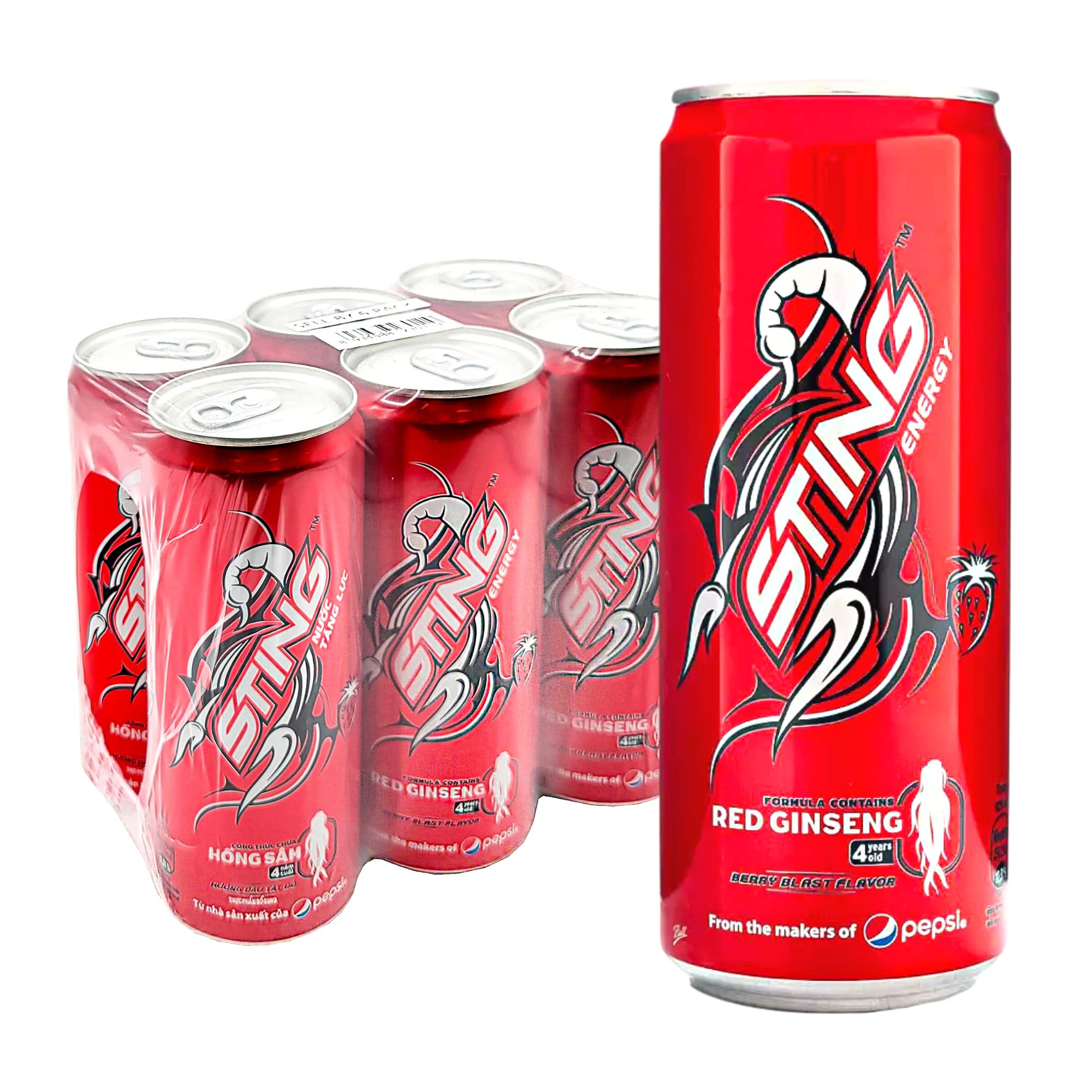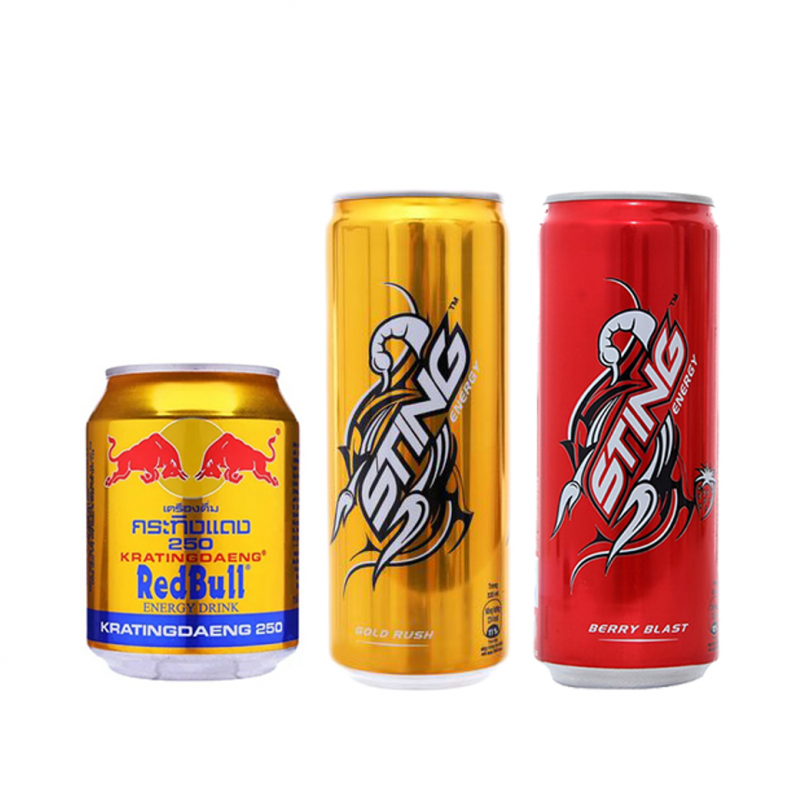No products in the cart.
Beverages News, Energy Drinks, Red Bull Energy Drink
Sting & Red Bull Which One Powers You Better
Sting vs Red Bull: Which One Powers You Better?
Table of Contents
Introduction
When it comes to energy drinks, the battle between Sting and Red Bull is heating up. While Red Bull has been a long-time favorite, Sting has been rapidly rising in popularity, particularly in Egypt. With changing consumer preferences, aggressive marketing, and significant pricing differences, it’s time to evaluate—which energy drink powers you better?
In this article, I’ll break down the Sting vs Red Bull energy drink comparison based on brand awareness, caffeine content, pricing, market presence, and consumer feedback. Whether you’re looking for an energy boost for a workout, late-night study session, or busy workday, this guide will help you decide the best energy drink for your lifestyle.

Brand Awareness and Consumer Preferences
Over the past couple of years, Sting energy drink has gained traction in Egypt, with brand awareness jumping from just 29% in early 2022 to 46% by late 2022. Meanwhile, Red Bull‘s brand awareness saw a decline, dropping from 88% in mid-2022 to 70% by 2023.
Not only has Sting increased awareness, but it has also become the preferred energy drink for many consumers. Its preference rate skyrocketed from 22% to 57% by late 2023, while Red Bull’s appeal declined.
Market Position and Pricing
One of Sting’s biggest advantages is its affordable price. Compared to Red Bull, Sting is nearly four times cheaper, making it a preferred choice for many, especially during times of inflation.
While Red Bull focuses on premium marketing and extreme sports, Sting takes a more inclusive approach, targeting young adults and positioning itself as an everyday energy drink. This strategy, combined with the lower price, has enabled Sting to gain market share rapidly.
Caffeine Content and Energy Boost
How do these drinks compare when it comes to delivering an energy boost? Let’s take a look at their caffeine content:
- Red Bull: 325 mg of caffeine per liter (77 mg per 8 fl oz/240 mL can).
- Sting: 250 mg of caffeine per liter (82.5 mg per 11.16 fl oz/330 mL can).
While Red Bull has a slightly higher caffeine concentration per liter, Sting packs more caffeine per serving. Depending on your caffeine tolerance and preferred boost level, this could influence your choice.
Want to know more about Red Bull’s composition? Check out this breakdown of Red Bull energy drink ingredients and see how it compares in terms of nutrition.
Marketing Strategies and Target Audience
Red Bull has long built its brand by associating with adrenaline-pumping sports, extreme athletes, and high achievers. The brand focuses on a young, high-income demographic aged between 15-45.
Sting, on the other hand, appeals to a broader audience by positioning itself as a drink for the everyday champion. It collaborates with local influencers, such as Mohamed Ramadan, to create mass appeal and accessibility.
Sales and Market Growth
Red Bull continues to dominate worldwide sales, selling over 12.138 billion cans in 2023 with a revenue of €10.55 billion. However, Sting has seen tremendous growth, particularly in emerging markets. In India, Sting’s sales surged by 440% after launching a cost-effective 250ml PET bottle.
Which One Should You Choose?
Ultimately, the best energy drink comes down to individual preference. Here’s a quick summary of what each brand offers:
- Choose Red Bull if: You prefer a premium energy drink with a strong brand reputation and conditioning for high-performance tasks.
- Choose Sting if: You want an affordable, everyday energy boost with a flavorful taste and more inclusive branding.
Looking for an alternative energy source? If you need something different, consider chocolate milk for lasting energy to keep you going throughout the day.
Conclusion
Both Red Bull and Sting have their own merits in the energy drink space. While Red Bull has long been the market leader with strong international presence, Sting is rapidly catching up by offering a more cost-effective and accessible option. If you’re trying to decide between them, consider what matters more to you—brand prestige or value for money?
What do you think about the Red Bull vs Sting energy drink comparison? Let me know in the comments below which energy drink powers you better!
Frequently Asked Questions (FAQs)
Which energy drink has more caffeine: Sting or Red Bull?
Red Bull contains 325 mg of caffeine per liter, whereas Sting has 250 mg per liter. However, per can, Sting has slightly more caffeine.
What are the main ingredients in Sting energy drink?
Sting contains caffeine, ginseng extract, carbonated water, sugar, and citric acid.
What are the main ingredients in Red Bull energy drink?
Red Bull contains caffeine, taurine, B vitamins, carbonated water, and sugar.
Which energy drink is better for workouts?
Red Bull is often preferred by athletes for high-intensity workouts due to its premium formula, but Sting provides a quick and affordable energy boost for physical activity.
How does Red Bull compare to Sting in terms of sugar content?
Both drinks contain sugar, but Red Bull offers sugar-free versions, while Sting tends to have a sweeter taste.
Which energy drink is better for late-night studies?
Both can work well, but Sting’s slightly higher caffeine content per serving may provide an extra boost for staying awake.


